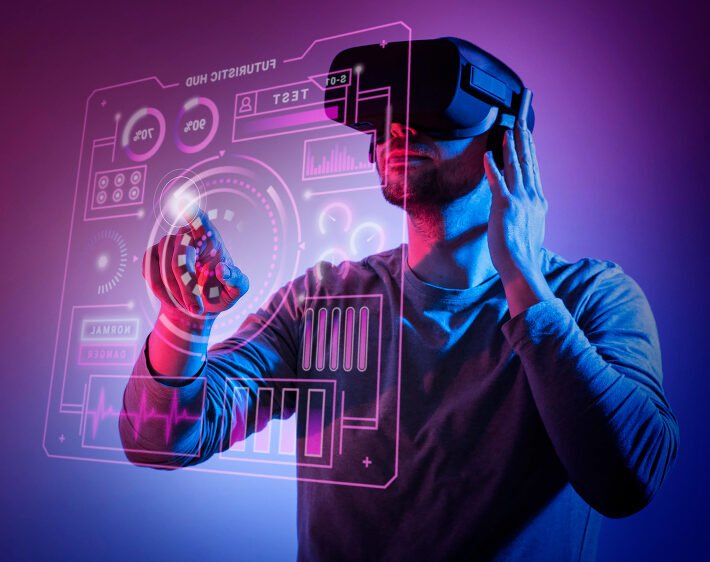If you’ve ever slipped on a VR headset and found yourself standing in the middle of a bustling Tokyo street or a medieval castle, you’ve already felt the power of virtual reality. But here’s a question: what makes those experiences feel real and meaningful, especially when you’re from a completely different part of the world?
The answer is localization.
And no, we’re not just talking about translating a few menu buttons. VR localization is a whole different ballgame. It means adapting the entire virtual experience, visuals, sounds, controls, and interactions to fit different languages, cultures, and expectations. In VR, you’re not just reading or listening. You’re living the experience. So if the localization feels off, the whole illusion breaks.
Let’s dive into what makes VR localization so unique in 2025, and explore some of the emerging trends shaping this fascinating space.
Why VR Localization Is So Different
In a traditional app or website, localization might involve translating text, maybe tweaking some images, and adjusting the layout for different languages. But in VR, users are immersed in a fully 3D environment. Everything they see, hear, and touch has to feel natural and familiar, otherwise, it creates a disconnect.
Imagine walking through a VR version of a French bakery, but all the signs are in English, the staff speaks with a robotic American accent, and the pastries look more like bagels. You’d feel like something is off, even if you can’t put your finger on it. That’s the challenge VR developers face, getting every detail just right for every market.
- Spatial Audio: Hearing It the Way Locals Do
One of the coolest parts of VR is how it uses spatial audio. Instead of just playing background music or flat sound effects, spatial audio simulates how sound moves around you. It makes you feel like someone’s actually whispering in your ear or walking past you from behind.
But here’s where localization comes in. Different cultures react to sound differently. The rhythm of speech, the tone of a voice, even the distance someone stands from you when they talk, these are all culturally influenced. Localizing spatial audio means more than translating dialogue, it means re-recording it with native speakers, adjusting volume and direction based on local preferences, and even changing ambient sounds to make the environment feel “right.”
For example, a forest in Japan might sound completely different from a forest in Brazil, not just in the types of birds you hear, but in the emotional tone the environment conveys.
- UI That Speaks Your Language, and Your Culture
User interfaces in VR are nothing like those on a phone or computer. You don’t tap a screen, you point, move, gesture, or even speak. That makes localization more complex but also more powerful.
Text still matters, of course, and it needs to be translated clearly and concisely. But what about symbols and icons? What about colors and shapes? A thumbs-up gesture might be friendly in one culture and offensive in another. A red circle could mean “record” in one place and “danger” in another.
That’s why UI localization in VR isn’t just about language, it’s about adapting the experience to match how people interact with the world around them. You have to think like a local, not just speak like one.
- Real-Time Speech Translation: Bridging Language Gaps on the Spot
One of the most exciting developments in VR localization is real-time speech translation. Thanks to AI, it’s now possible for people speaking different languages to talk to each other in a virtual environment, and have their words translated instantly.
Think about what that means. You could attend a global virtual conference, collaborate with teammates across the world in a shared VR workspace, or even play a multiplayer game with friends from five different countries, without needing to speak the same language.
Of course, this kind of translation still has its hiccups. Humor, sarcasm, or slang can get lost. But the technology is getting better every day, and it’s opening doors for cross-cultural experiences that wouldn’t have been possible before.
- Culturally Adaptive Content: More Than Just Words
Here’s the thing, people don’t just speak different languages. They live in different realities. They value different things, have different social norms, and relate to the world in different ways. Good VR localization recognizes this and adapts the content accordingly.
That might mean changing a character’s clothing to reflect local styles, swapping out food items in a virtual kitchen, or even rewriting dialogue to reflect cultural norms. A joke that lands in New York might fall flat in Tokyo. A teaching method that works in Berlin might confuse someone in Cairo.
By tweaking these elements, developers can make the experience feel personal, like it was built just for that audience. And when you’re inside a VR world, that sense of personal connection makes all the difference.
- AI That Learns What Works, and What Doesn’t
AI is playing a bigger role in VR localization than ever before. It’s not just helping with translation, it’s learning from users. When people pause in a certain place, skip over dialogue, or react positively to a feature, AI takes note.
That feedback can be used to fine-tune the experience for different audiences. Maybe a voiceover needs more energy in one language. Maybe a menu needs simpler icons for a certain age group. Over time, the system learns and improves, delivering more personalized and effective content.
It’s like having a localization team working in the background, constantly observing, adjusting, and optimizing the experience for each user.
The Human Touch Still Matters
Now, with all this amazing tech, you might think we’re heading toward a fully automated future where AI handles all localization. But here’s the truth: machines can’t replace human insight.
You still need real people, cultural experts, native speakers, and creative writers, to shape the story, guide the tone, and catch the things AI will miss. The best VR experiences come from a blend of both worlds: smart technology powered by human understanding.
Wrapping Up
Localization for virtual reality isn’t just about translating words; it’s about crafting an immersive, inclusive experience that feels right, no matter where you’re from. As VR technology evolves, so do the expectations of global users. They want to be seen, heard, and understood, not just in language, but in culture.
By paying attention to spatial audio, culturally adaptive UI, real-time speech translation, and personalized AI, companies can create VR worlds that speak to everyone. And when done right, that’s when virtual reality truly becomes a shared reality.
 AW HOLDING
AW HOLDING
 Tel: +971 24912220
Tel: +971 24912220
 sales@awprotranslations.com
sales@awprotranslations.com




